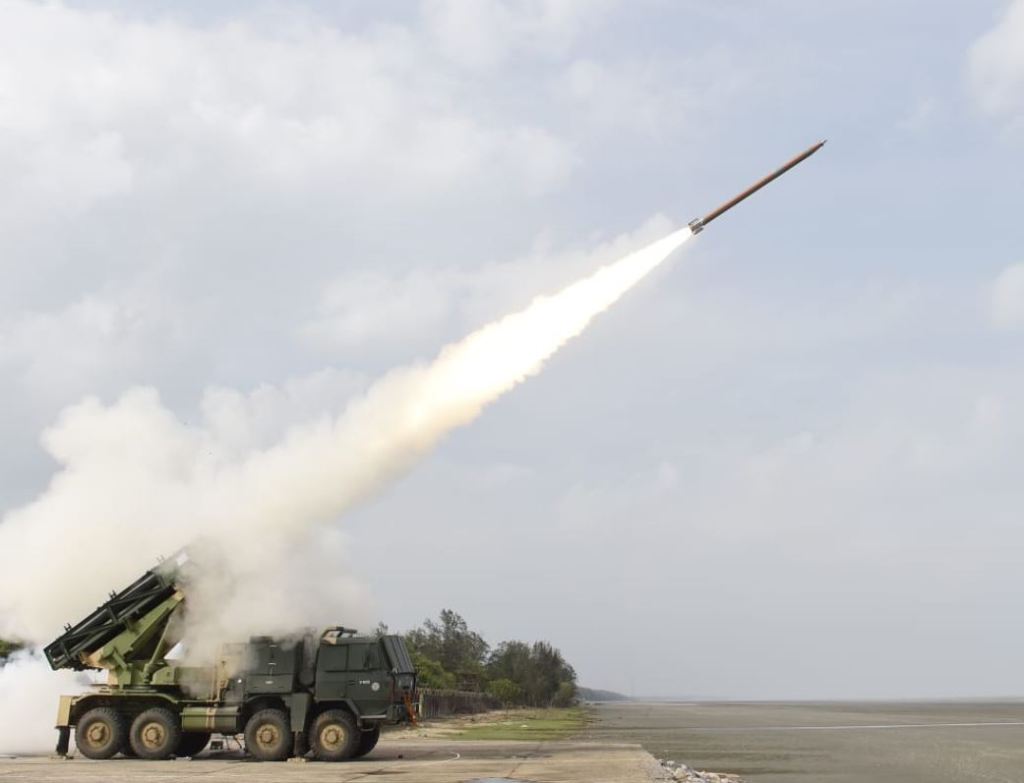India Is Forging Ahead With Rocket Artillery

There’s no doubt the country’s armed forces are struggling with inadequate equipment but as far as the Defense Research and Development Organization (DRDO) are concerned its technical efforts are hard to beat. In late June the agency announced it successfully tested precision rockets at intermediate ranges. The first was a 122mm munition–better known as “Grad” after its Soviet origins–that India’s state news agency claimed flew “up to 40 kilometers.” Far from obsolete, Grad rockets are the most widely used medium caliber indirect fire munitions coveted by armies in four continents. The Indian Army still maintains a sizable collection of Soviet vintage BM-21 Grads augmented by locally made variants.
But wait, there’s more!
Aside from the upgraded 122mm rocket artillery the DRDO also publicized the successful test firing of the Pinaka Mark I guided rocket that exceeded the Grad’s range with a flight trajectory reaching 45 km. As impressive as this appears it isn’t all that surprising given the Pinaka Mark I is a larger munition than the Grad, having a diameter of 214mm, and the improved Pinaka Mark II is even more potent with a range of 75 km. In all seriousness, one wonders why the DRDO keeps testing its Pinaka munitions when these weapon systems matured 20 years ago. For perspective, the Pinaka rocket artillery system, which utilizes an 8×8 transporter mounting the launcher, is far more potent than the US-made HIMARS. Unless, of course, the HIMARS is armed with newer extended range rockets. There are persistent rumors the Pinaka munition lineage is being developed into a ballistic missile-type rocket with range beyond 100 km.
Compared to the HIMARS with its six launch tubes for its 227mm munitions the Pinaka carries a dozen launch tubes for its 214mm munitions. When armed with the Pinaka Mark II rockets their range and lethality are superior to the HIMARS’ regular payload. The difference is starker when the range of the Pinaka Mark II is then matched against the Russian-made BM-27 Uragan and BM-30 Smerch that both have larger munitions–the Pinaka does fly farther and hit harder. Without any trace of doubt, the DRDO’s Pinaka is a success story. But like so many examples of Indian military technology its reception from the armed forces was tepid at best. After its initial combat use in the Kargil War of 1999 the Pinaka Mark I should have matured by the early 2000s as the Pinaka Mark II’s development was cleared. Yet it’s baffling how the munitions are still undergoing tests and there are no exports pushed by the defense ministry.
The DRDO’s improvements of the ubiquitous Grad rocket does bode well for its the armed forces’ existing arsenal. The Soviet vintage BM-21 remains in service and 150 units are estimated to be operational. Pakistan manufactures its own Grad rockets along with a transporter-launcher originating from North Korea. Having a local and active production line for Grad rockets should improve confidence in India’s image as an arms exporter with a growing product catalog. The Pinaka transporter-launcher, on the other hand, is another neglected weapon system because of a convoluted timetable for adopting them as replacements for the BM-21’s. True to its reputation for absurd schedules the army is still arranging its procurement of the Pinaka rocket artillery system. When this does happen the biggest success of the program is how everything is sourced and supplied locally.
By examining its progress in domestic military technology since the 1990s India’s government agencies such as the DRDO, together with its partners in the state-owned ordnance factories and the private sector, have all the reasons to be proud of how far they’ve come. Ignoring a few misses and erratic government support the technology at the DRDO’s fingertips can have a transformative effect on global events. But this is a completely separate matter from the armed forces’ instinctive reluctance to purchase superb Indian technology while looking for expensive options abroad.













Comments are closed.